Growing rhubarb in the home garden offers an annual harvest from a pretty, somewhat tropical-looking perennial. Plant some now and it will produce for years.
Head over here for more perennial crops you can plant once and harvest for years.
Contributed by Jodi Torpey, author and Master Gardener.
Planting and Growing Rhubarb (Rheum rhabarbarum)
Rhubarb is a cool-season vegetable that’s been cultivated for at least 2000 years. In its early history, rhubarb was used strictly as a medicinal herb. It wasn’t until much later that people discovered its many delicious culinary uses for pies, sauces, jams and jellies.
This tough perennial vegetable looks like long red celery stalks, but it belongs to the buckwheat family. It’s one of the few garden edibles grown for its stems only. The leaves and roots are toxic, so plant your rhubarb patch where children and pets can’t reach it.
Rhubarb Varieties for Your Garden
Look for rhubarb plants in seed and garden catalogs that arrive in late fall or winter. Order early and the company will send transplants when the timing is right for planting in your area.
Grow Some Greens!
Ready to grow fresh greens, no matter WHERE you live? Sign up for my
FREE quick-start guide and start growing some of your own food!
You can also wait for spring when garden centers have rhubarb plants available with other fruit and vegetable transplants.
Popular Rhubarb Varieties:
Victoria – This variety is the one most commonly found at garden centers. It’s a favorite for its long, dark-pink stalks.
Canada Red – This rhubarb variety features long, thick stems with a nice red exterior; stems add a good red color to dishes and need less sugar than other types.
Crimson Red – The color of the 24” inch long stalks gives this rhubarb its crimson name, plus it’s winter hardy and disease resistant.
How to Plant Rhubarb
Rhubarb is planted in spring using transplants called crowns. These are often sold as bare root stock. Select healthy rhubarb crowns that have at least one large bud called an “eye.” In the future, you may be able to divide healthy rhubarb plants to create additional plantings.
Because rhubarb is a long-lived perennial, carefully consider where to plant it, either in the vegetable garden, landscape or raised bed. The vegetable can grow to 4 or more feet across and fill a garden space quickly.
Rhubarb can be planted in spring when soil temperatures reach about 50 degrees. Soak the roots in water for several hours before planting. Plant crowns so the eyes are about 1 or 2 inches below the soil surface; space plants around 36-48 inches apart and 36-48 inches between rows.
It’s also possible to plant rhubarb in late fall for a crop that grows next spring.
When planting, be sure to leave the soil a little looser over the crown to make it easier for leaves to sprout and grow. Water in plants as soon as possible; don’t let the new plantings linger in dry soil.
Once plants are established, rhubarb will start growing again in cool spring weather, then grow slowly through summer and fall. Plants will die back to the ground once freezing temperatures hit.
Requirements for Growing Rhubarb
Light Requirements
Rhubarb prefers a spot with full sun, but it can grow with some shade. Plant in an area of the yard or garden that gets at least 6-8 hours of sun each day during the prime growing season.
Soil and Fertilizer Needs
Rhubarb does well in garden beds or raised beds that are filled with a rich, well-draining soil high in organic matter. Start by digging in organic compost or well-aged manure once soil can be worked in spring.
Rhubarb can practically grow itself once it’s established in the garden. To help it along, side dress the plants early in the season with an all-purpose fertilizer (10-10-10) and water in deeply. To side dress, sprinkle the dry fertilizer on the soil surface, about 6 inches to the side of each plant or rows of plants. Water in.
If the weather suddenly turns too hot for rhubarb, the plants will produce seed stalks. Cut these from the plant and toss away.
Water Requirements
Water the soil around rhubarb plants and keep it moist, but not soggy. If the soil doesn’t drain well, there might be a problem with rotting.
Plants tend to wilt in hot temperatures and they may stop growing. Water deeply and thoroughly about once a week, especially in hot and dry weather.
Combatting Common Pests and Other Rhubarb Growing Problems
Rhubarb is an almost maintenance-free plant with just a few problems:
Aphids may show up on leaves or stalks. Use a forceful spray of water to remove them, especially under leaves.
Rhubarb might not resprout in spring if the crown has rotted over the winter. Dig up and destroy infected crowns and replant new crowns in a different area of the garden.
Rhubarb stalks that are thin and spindly signal overcrowding. Divide rhubarb by lifting the whole plant and cutting it into several pieces to replant.
Brown and wilting leaves are signs of fungal crown rot. Check the crown to see if it’s soft and dig up. Replant new crowns in a different place in the garden.
When to Harvest Rhubarb
It’s best to wait an entire season, giving the plant a full year of growth, before harvesting any rhubarb stems. Giving plants this extra time helps them grow strong root systems.
In the second season, a few stalks can be harvested; to do so, but the stalks at the base. Wait for stalks to turn from green to pink to red, but refrain from harvesting all the stalks each season.
Propagating Rhubarb
You can divide your rhubarb plants every 5 years to keep plants producing. The day before dividing, water plants and dig a hole in the new planting site. Use a garden fork or spade to lift up each plant and divide it in two or more plants with as many roots as possible.
Transplant immediately to the new space, firm soil around the roots and water. Keep soil moist, but not soggy. You could also repot the divided plants to share with other gardeners.
Enjoying Homegrown Rhubarb Recipes
Use fresh rhubarb within a few days of harvesting. Because this vegetable is powerfully tart on its own, most recipes call for large amounts of added sugar. Strawberries also combine deliciously with rhubarb for pie fillings, jams and sauces. Or try this delicious rhubarb crisp!
If your rhubarb stalks are extra thick, you’ll need to remove the stringy skin that runs the length of each stalk. Remove strings by sections, cutting a small portion at the bottom and pulling strings the length of the stalk.

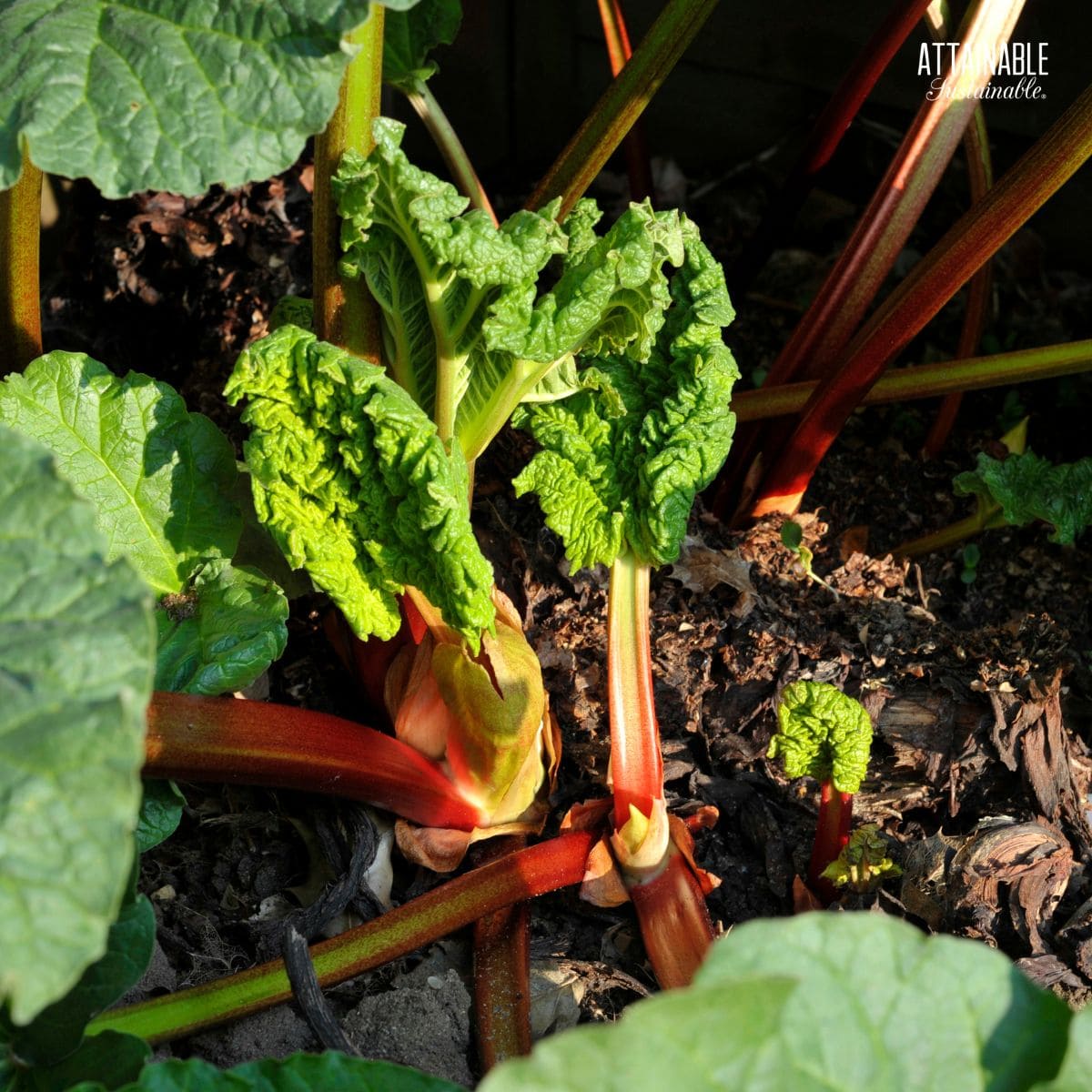
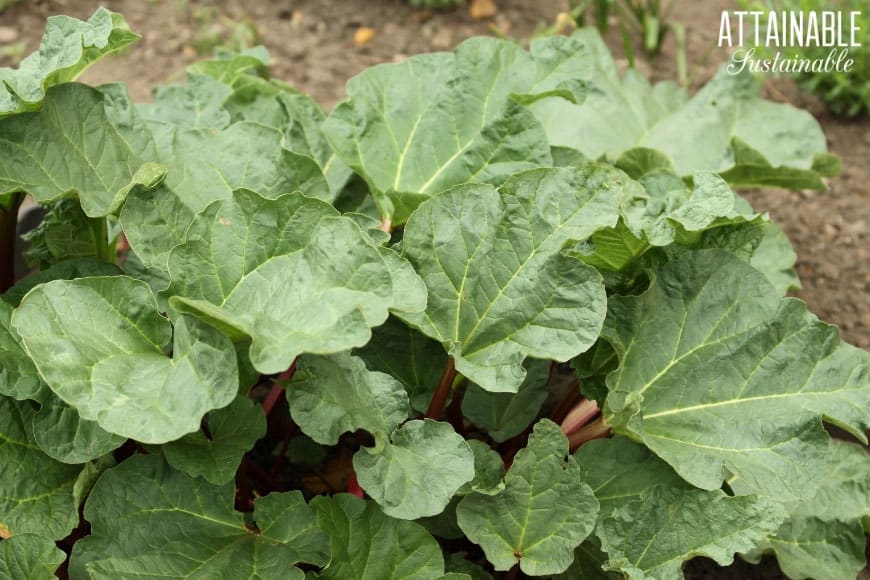
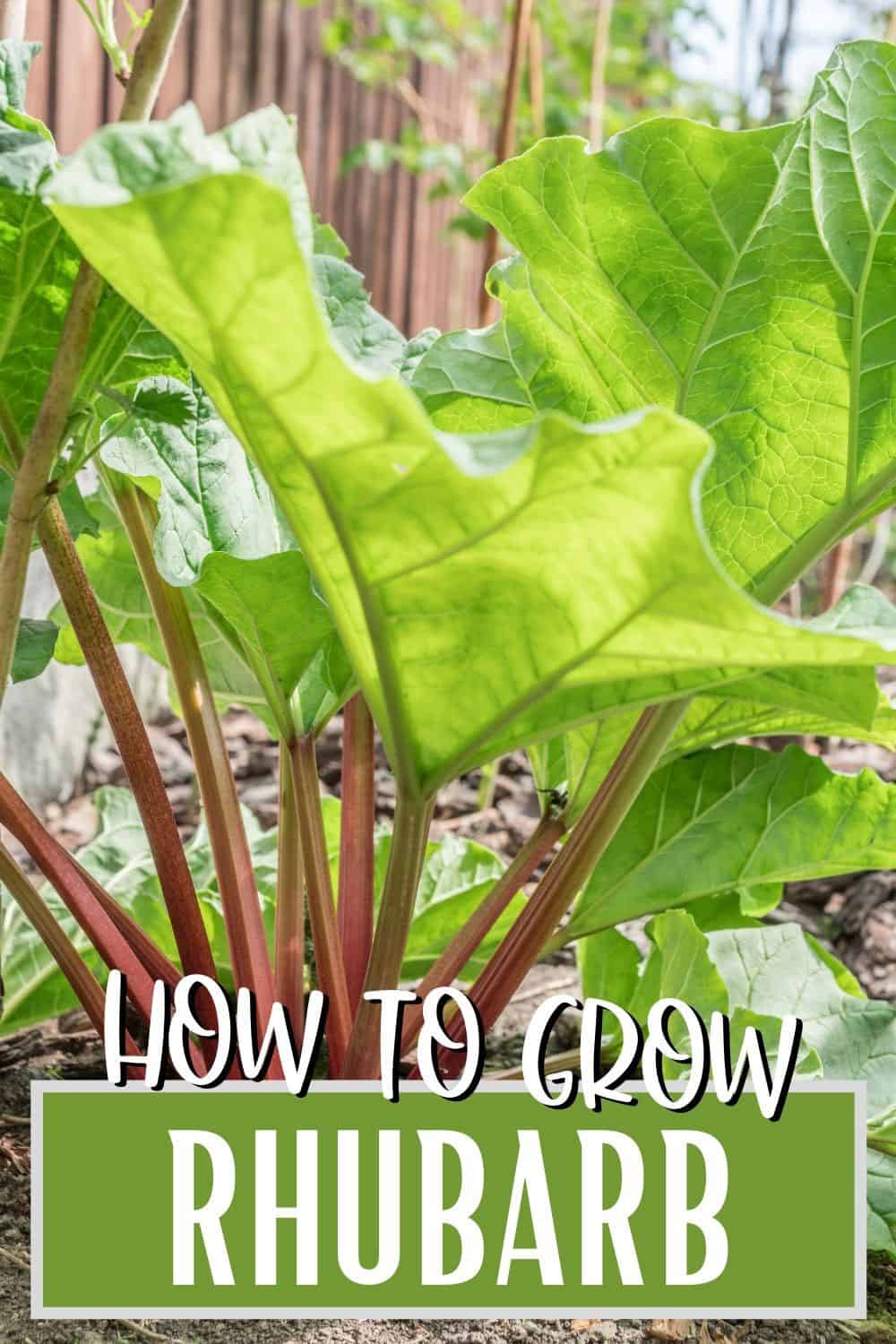
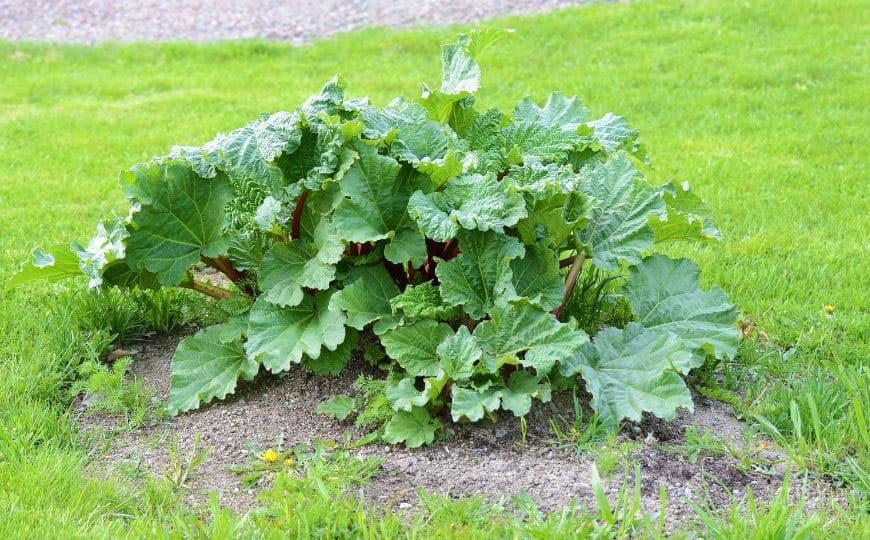

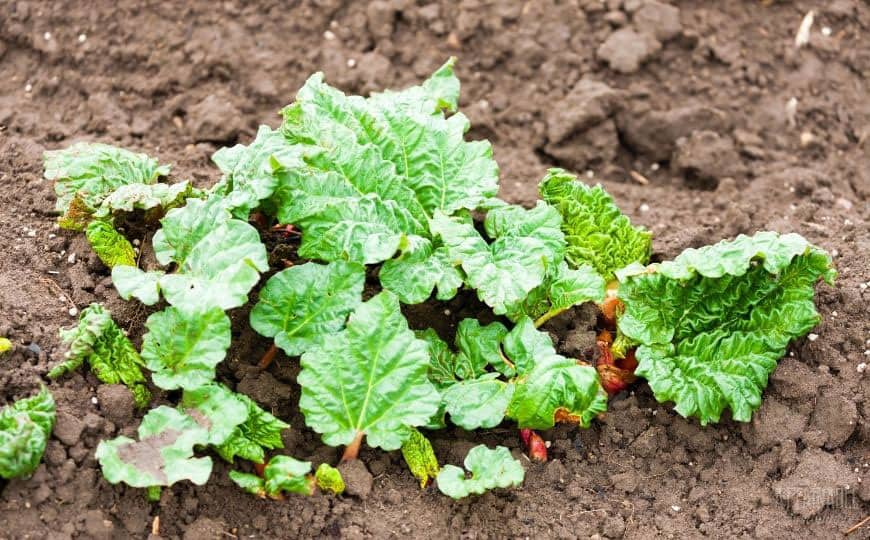
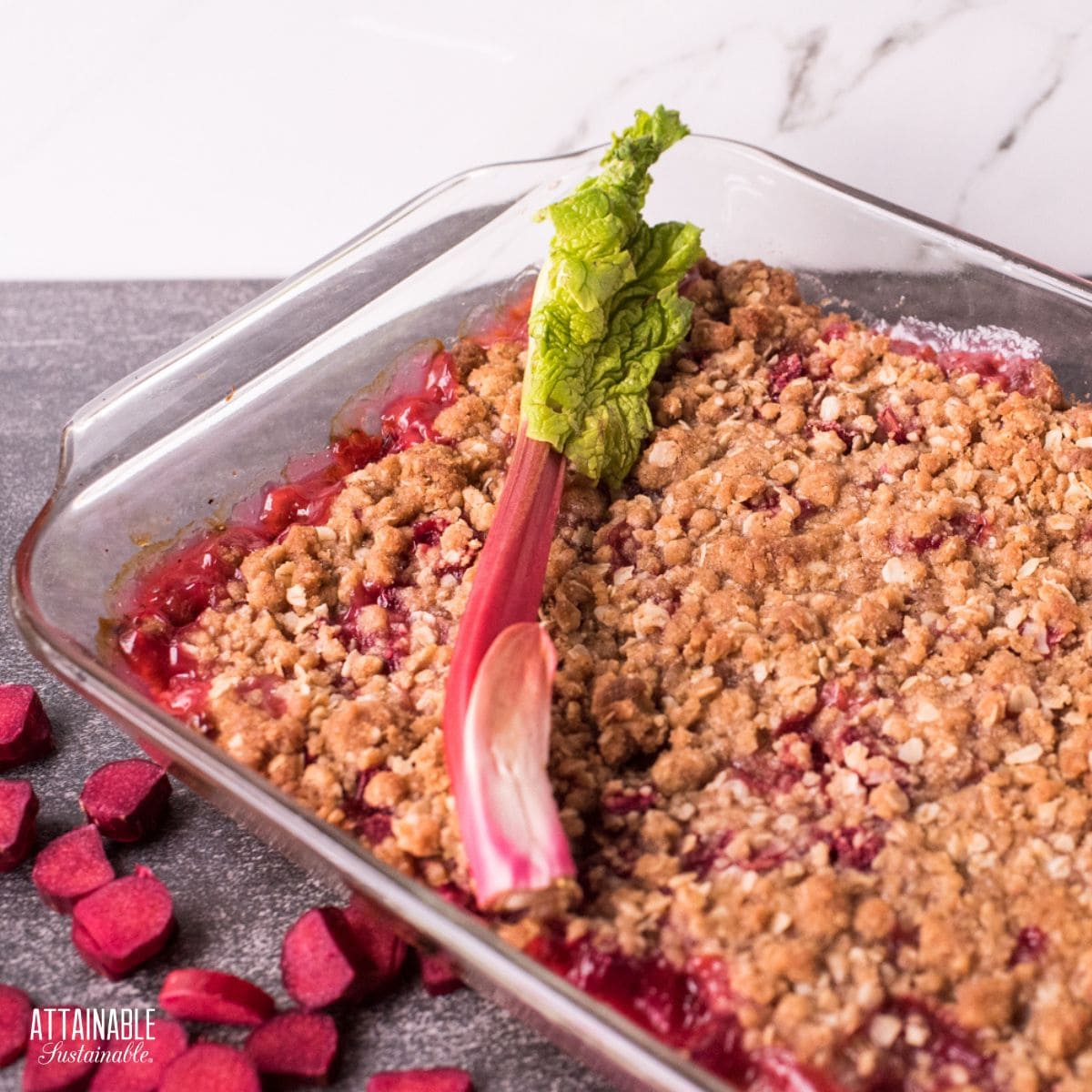





My neighbor said our patch is like 80 years old. In the last 3 years it seems to be dying. I don’t know what to do.
Oh no, how sad! I wonder if the spot it is in has more shade now from a tree, or has gotten too hot with the changing climate? Take a look at the watering requirements for hot weather. Otherwise check for pests and maybe try adding new soil and fertilizer. Good luck!
Will it grow in Hot climate, as in Memphis, TN area? I never see any here and we do get very hot summers.
It should, give it a try!
I once lived in Little Rock, AR and struggled to grow my beloved rhubarb. It was pretty pitiful. I would try planting where it only gets morning sun. Water in the late evening with really cold water. This plant loves our Pacific NW cool nights, even after a very warm day. Be sure to ant in rich, well-draining soil and side-dress with aged steer or chicken manure.
How can you grow Rhubarb here in Florida I always had it in NY
Grow it from seed, and double-check how early to plant in your region. Good luck!